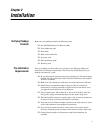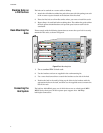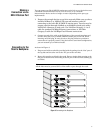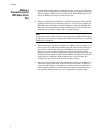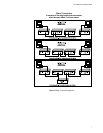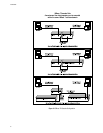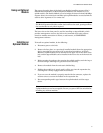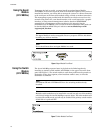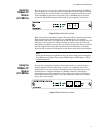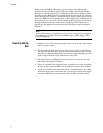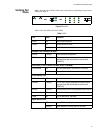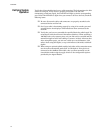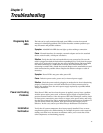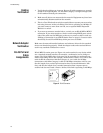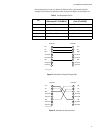
AT-FH800 Series Installation Guide
11
Using the
100Base-FX
Module
(AT-FH807u)
You can connect to a remote site using the fiber optic uplink module AT-FH807u.
These modules act as a two-port switch, interfacing the internal repeater buses to
the attached device. SC fiber module is available. It connects to both the internal
10 and 100 Mbps repeater bus, but operates only at 100 Mbps for the external
connection. The default setting of this module is auto-negotiate (see Figure 8).
Figure 8
100Base-FX Module Front Panel
Before using a fiber optic module, prepare fiber optic cable connectors at both ends.
When connecting the module directly to an end-node device, for example a
workstation or file server, run cable from the RX (TX) port on the module to the TX
(RX) port on the target device. When inserting the cable, be sure the tab on the
plug clicks into position to ensure that it is properly seated. Note that as a general
rule, the length of fiber optic cable should not exceed 2 kilometers (1.24 miles)
when the link is operated at full-duplex or 412 meters (0.25 miles) for half-duplex.
Note
In the present design, the uplink port only can not be monitored or managed by
Local Management Agent, Telnet Agent, RMON Agent, SNMP Agent, or Web-
based Management.
Using the
100Base-TX
Module
(AT-FH808u)
You can use a twisted-pair module to connect the stack to a network device in
another segment such as another hub, a switch, or a workgroup server. This
module acts as a two-port switch, interfacing the internal repeater buses to the
attached device. It supports 10 Mbps or 100 Mbps with half- or full-duplex
communications via auto-negotiation (if also supported by the attached device).
This module confines local traffic to the stack and passes traffic to the attached
device only when required.
Figure 9
100Base-TX Module Front Panel



